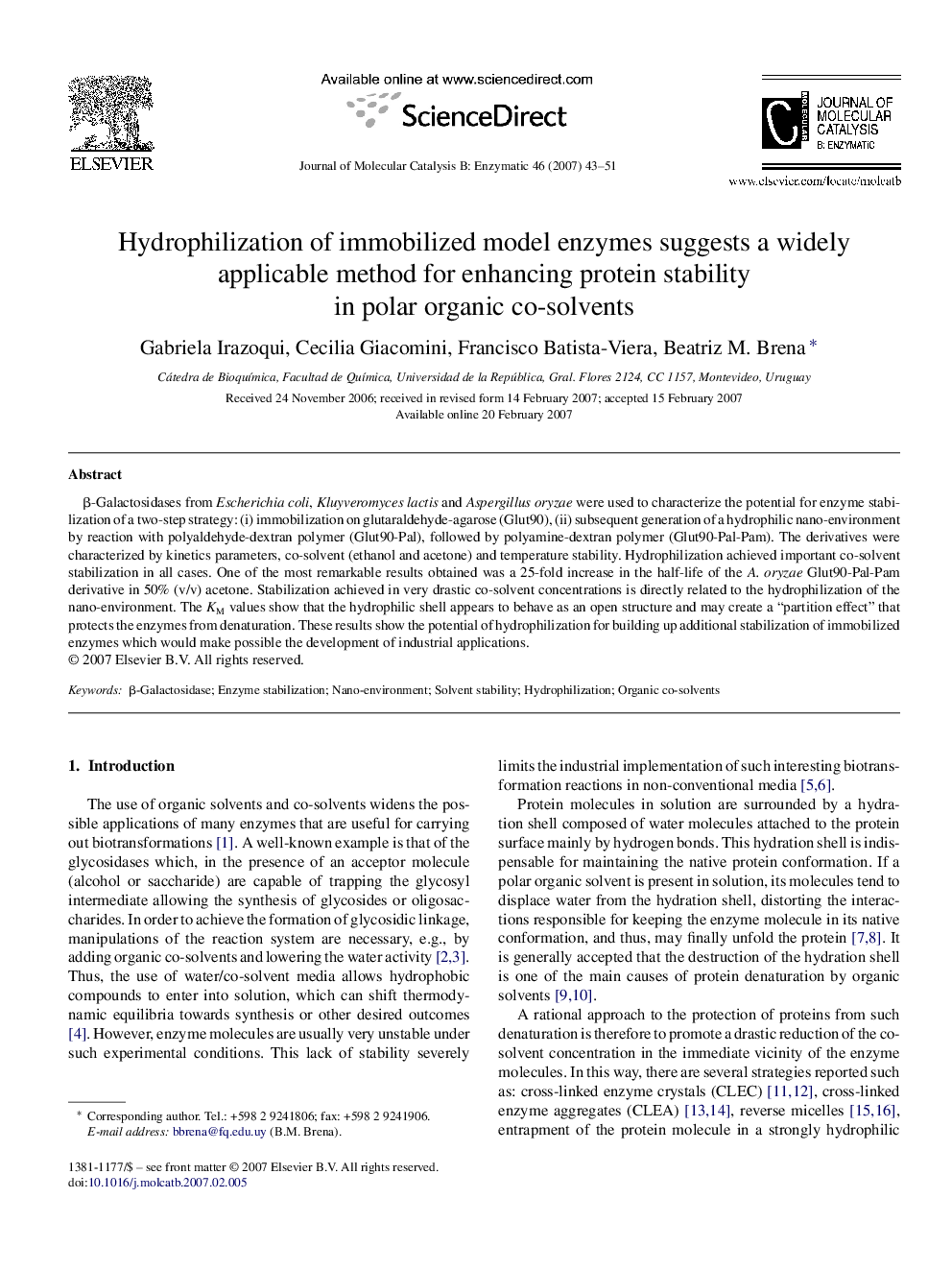| Article ID | Journal | Published Year | Pages | File Type |
|---|---|---|---|---|
| 71054 | Journal of Molecular Catalysis B: Enzymatic | 2007 | 9 Pages |
β-Galactosidases from Escherichia coli, Kluyveromyces lactis and Aspergillus oryzae were used to characterize the potential for enzyme stabilization of a two-step strategy: (i) immobilization on glutaraldehyde-agarose (Glut90), (ii) subsequent generation of a hydrophilic nano-environment by reaction with polyaldehyde-dextran polymer (Glut90-Pal), followed by polyamine-dextran polymer (Glut90-Pal-Pam). The derivatives were characterized by kinetics parameters, co-solvent (ethanol and acetone) and temperature stability. Hydrophilization achieved important co-solvent stabilization in all cases. One of the most remarkable results obtained was a 25-fold increase in the half-life of the A. oryzae Glut90-Pal-Pam derivative in 50% (v/v) acetone. Stabilization achieved in very drastic co-solvent concentrations is directly related to the hydrophilization of the nano-environment. The KM values show that the hydrophilic shell appears to behave as an open structure and may create a “partition effect” that protects the enzymes from denaturation. These results show the potential of hydrophilization for building up additional stabilization of immobilized enzymes which would make possible the development of industrial applications.
